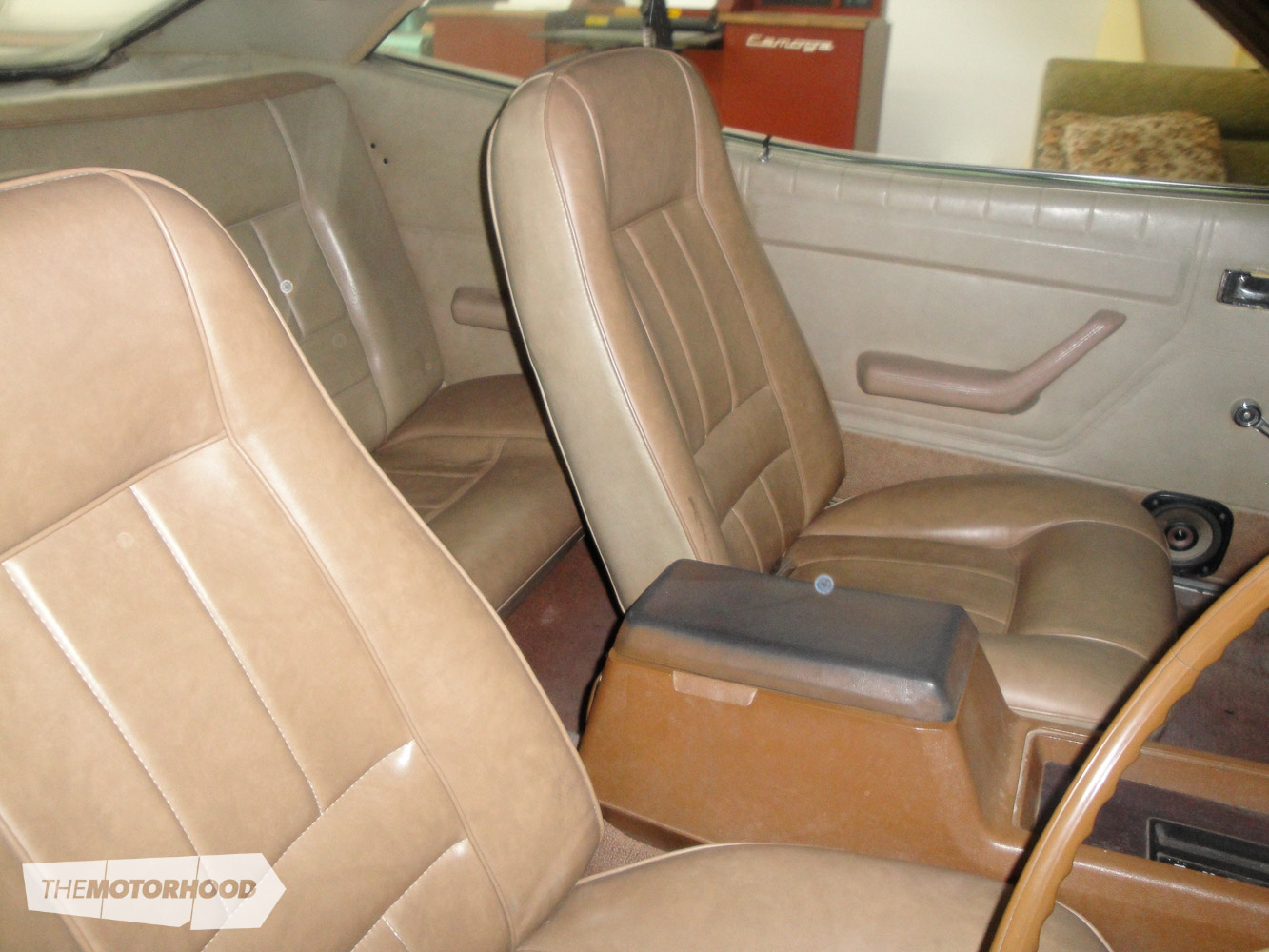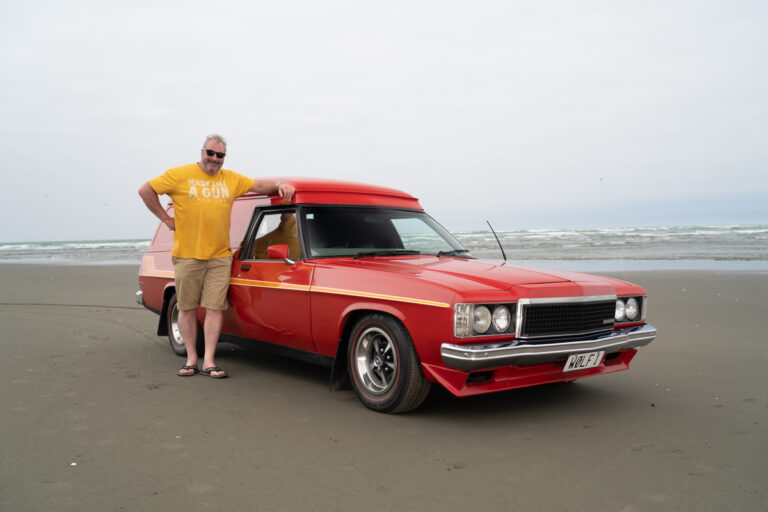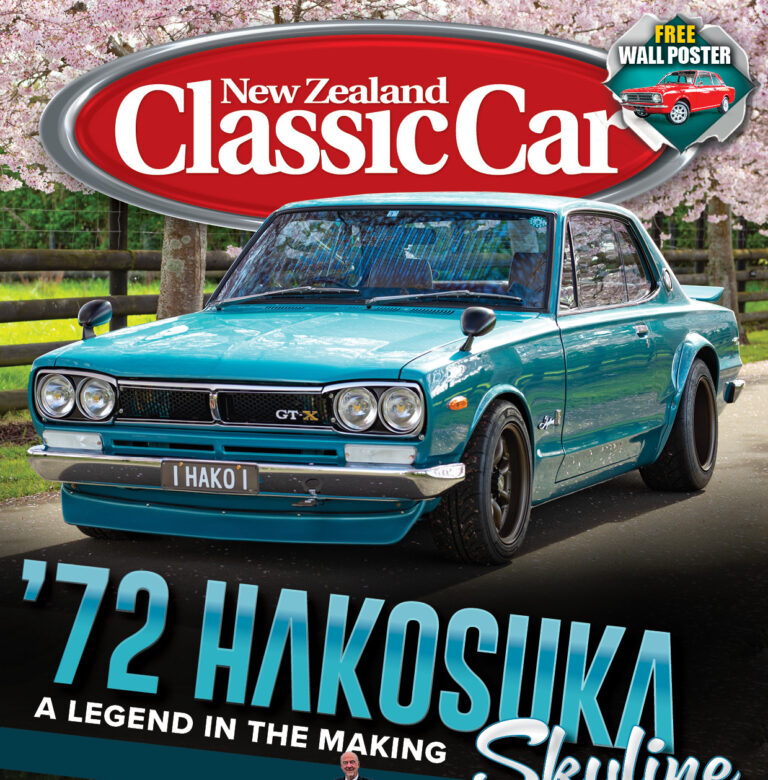data-animation-override>
“It’s the final piece of the puzzle that completes the build of any car — we take a look at some of our favourite car interiors from the last 10 years, and what goes into top-tier upholstery”
In the build of any car, it’s easy to get distracted by the simpler things it may ‘need’ — a 400ci-plus big block making 500hp, perhaps, or 20-inch wheels, or a flawless paint job. For sure, all these things — engine, drivetrain, running gear, wheel and tyre combo, and paint — are extremely important parts of a build, but it’s the interior that really separates a great build from a good one.
That can present some problems — namely, where to start? As much as we can admire a well-presented interior, what actually goes into crafting it is still a bit of an unknown for a lot of petrolheads out there. As the interior is the final piece of the puzzle for a vehicle build, and New Zealand has some of the best automotive upholsterers in the world, we thought it was about time we talked to some of the guys in the game to find out more.
The general consensus was to be realistic with your money — there’s no point in trying to cut costs by using cheap materials that will perish over time, regardless of how well upholstered they have been. In the long run, it’ll always pay dividends to do the best job you can afford.
Likewise, research is always good — make sure you choose an automotive upholsterer, as you don’t want an upholsterer using the wrong materials in your car, such as furniture trim that hasn’t been UV treated. Read on to find out more about a trade most of us don’t actually know as much about as we may think we do.
Gordon Cromb: TGA Quality Upholstery
“I’ll trim just about anything, but I specialize in vintage cars and hot rods,” says Gordon of TGA Quality. “The basic process means we’ll strip the interior to make sure it’s alright — there’s no point having a nicely trimmed interior that is crap underneath. The metal seat frame is sandblasted and powder-coated, springs checked, then underfelt is installed. This prevents the springs from cutting the foam layer above. Finally, the ‘cover’ is installed, which is whatever material chosen by the customer. Leather is always a popular choice.

“I trimmed Rex and Jenny Moyle’s ’57 Chev Bel Air, ‘ALBINO’, which ended up winning Beach Hop Top 10 in 2010 — that car was finished with a white-leather interior and star-patterned headlining, just two weeks before Beach Hop. I also trimmed their teardrop caravan, which made the Top 10 at this year’s Beach Hop, too, with a similar interior treatment.”

- TGA Quality Upholstery
- 027 499 9569 / 07 577 9775
- 14 Wilrose Place, Gate Pa, Tauranga
- tgaqualityupholstery.co.nz
Greg Mather: Midnight Upholstery Ltd
Despite being relatively new to the scene, Midnight Upholstery Ltd has already made significant waves, having been involved with several impressive builds. This beautiful Ford F100 pickup is one such example. It was completed earlier in 2015 and was meant to debut at Repco Beach Hop 15, but unfortunately the car wasn’t complied in time.

“It came up really well, considering it was pretty much a scratch build,” says Greg. “It was just another job in my eyes. All the jobs that come through here are a bit of a puzzle. They’re all totally different jobs, with totally different requirements.”
In typical Kiwi fashion, Greg started the business when he realized, after nine years in the industry, that he could be working for himself.
“The before and after, the satisfaction of being able to see the customer with their finished job, and them being over the moon with it are the things I enjoy most,” he said.
- Midnight Upholstery Ltd
- 07 849 7203
- 431 Te Rapa Rd, Hamilton
- facebook.com/midnightupholsteryltd
Darian Perrett: Cromwell Upholstery
The four-strong team at Cromwell Upholstery tackle challenges ranging from lounge suites to marine to cars. “The main difference between doing a car and a lounge suite is that lounge suites take anything up to 20 metres of fabric, whereas a car will only take 14 — but the labour side of doing a car is twice, maybe even three times, what it would take to do a lounge suite.”
Their catalogue of past automotive creations is impressive, with Brian Ward’s unique 1954 Chevy one of their crowning moments. “The interior was actually originally out of a ’59 Cadillac, and altered to fit the Chev … There are quite close ties between that car and us.” In the 2014 Hot Rod Nationals, Ward’s car won second place in the Unfinished class.

- Cromwell Upholstery Limited
- 03 455 1763
- 11 Rogers Street, Cromwell 9310
- cromwellupholstery.co.nz or facebook.com/CromwellUpholsteryLtd
Chris Pocock: Classic & Custom Motor Trimmers
Chris Pocock, owner and operator of Classic & Custom Motor Trimmers, has 28 years’ experience in motor trimming. “We’re set up to cater for classic car and hot rod enthusiasts. I believe that, since you spend so much time inside your vehicle, comfort should be high on the list when rebuilding your seats.”

So, what’s the course of action that goes into the refurbishing process?
“On a bench seat from a classic that is 50-odd years old, I would suggest first removing all the padding and checking over the springs, repairing any that are broken,” Chris says. “Next, the old flock padding is replaced with new foam, and side supports can be added to help prevent occupants from sliding off the side and leaning on the door. This helps you to sit on the seat and relax, rather than hang on when travelling — even a bench seat can be set up to give similar support to a bucket seat.”
- Classic & Custom Motor Trimmers
- 06 357 0835
- Unit 1, 209 John F Kennedy Drive, Palmerston North
- ccmtltd.co.nz
Perrett Griffin: Audio & Upholstery
What does Perrett Griffin, from Audio & Upholstery, value in interior trimming? “I take pride in being a one-stop shop for the automotive interior, from trimming through to sound,” he says. “A lot of guys in the upholstery industry won’t touch the electrical side of things, but the interior’s coming apart for the upholstery anyway — it makes sense to save time and labour by sorting out the audio at the same time.

“Working with fibreglass and timber is second nature to me, and it means I can save time and money by making interior trim parts — older cars usually have very brittle interior plastics.
“I trimmed Luke Ennion’s ‘Little Menace’ bubble car, using a colour scheme based around the metal-flake red steering wheel. There’s actually not much to that interior — it’s just vinyl glued to foam, with stitching and edging — but I love custom work like that.”
- Audio & Upholstery
- 09 238 2178 or 027 230 8178
- 7D Glasgow Road, Pukekohe East, Pukekohe
- facebook.com/audioupholstery
Laki Tzitziras: Absolute Upholstery
“One of the most important things about upholstery, I think, is that people know what’s available,” says Laki Tzitziras of Absolute Upholstery. “Some places will show you low-quality trim to keep costs down and win the job, but is it worth it? When trimming a car, the cost of labour far outweighs the cost of materials — it can be as much as 80:20 with lower-grade interiors — so it’s worth considering spending a bit more for far higher-quality materials. For a small increase in the overall cost, you get a much better interior. I really want to stress the importance of proper-quality materials, for finish and longevity,” he says.

“Depending on the type of job required, quality workmanship can be quite time consuming, but any job can be designed and tailored for whatever the customer requires,” he adds. “Spending time with the client to go through material combinations is the fun part — it’s up to us to let them know what materials are available. Our product knowledge should be shared with the client to give them choices, offering the best materials from across the world, available right here in New Zealand. These amazing automotive materials and leathers are made especially for the automotive industry, and can help create interiors that exceed all the owner’s expectations — our work speaks for itself.”
“A lot of people source ready-made interior trim kits, but what they need to know is that these are usually mass-produced from cheap materials, so they can be sold cheap,” he says. “As you’ll likely get an upholsterer to fit them anyway, it makes a lot of sense to get trim made instead — that way, you’re getting quality materials, a guaranteed fit, and supporting local business at the same time.”
- Absolute Upholstery
- 04 802 4638
- 52 Cambridge Terrace, Te Aro, Wellington
- absoluteupholstery.co.nz
Shawn Horwood: Action Canvas & Upholstery Ltd
Shawn at Action Canvas & Upholstery Ltd has worked in the sector for almost 30 years, and his son recently joined the business making it a family affair. The pair have worked on some exceptional vehicles over the years, including Steve and Leanne Milne’s gorgeous ’56 Chev 210 aka ‘SLIK56’, which we’ll have a full feature of in an upcoming issue — the level of detail inside includes trim specifically stitched to mirror exterior trim lines. While his breathtaking work on SLIK56 is clear to see, he ranks Grant Hilton’s red ’32 Ford Cabriolet as his toughest job ever. “It was a challenge,” Shawn says. Part of his job satisfaction stems from his own personal passion for cars. “I’ve had a ’39 Chrysler Royal for about 30 years. I got it when I was an apprentice, and I’ve done 26,000 miles in it since I’ve had it on the road.”

- Action Canvas & Upholstery Ltd
- 07 574 1888
- 23A Hewletts Road, Mount Maunganui
- Find them on Facebook:
This article was originally published in NZV8 Issue No. 124. You can pick up a print copy or a digital copy of the magazine below:







